Given America’s well-known predilection for ice cream it may surprise someone to learn the United States does not lead the world in ice cream consumption. Despite consuming a bit more than five and a half gallons per person of the frozen concoction per person annually, the United States lags behind New Zealand in personal ice cream eating. Still, America is no slouch when it comes to enjoyment of ice cream, which once had the reputation of being a luxury food available only to the well-to-do.
Once refrigeration and industrialization made it readily available to all Americans ice cream became a part of folklore. In the great American tradition, tall tales and myths developed around ice cream, including the origins of many of the popular ways by which it is consumed. The origin of the ice cream cone became an urban legend, with disputed versions created regionally. So did the backstory for the ice cream sundae, its cousin the banana split, the malted milk shake, and the nearly uncountable number of flavors offered to consumers.
10. It started as a food for the wealthy

Records of ice cream consumption in the colonies of North America date to the mid-18th century, and recipes describing its preparation date from even earlier. Although there are records of indigenous peoples enjoying snow and ice shavings flavored by various means, the combination of cream, sugar, and flavorings blended to near frozen consistency – ice cream – arrived with the Europeans. For nearly a century the dish remained known only to the well-to-do. It was expensive. Sugar was a luxury for most Americans of the day. Ice, though ubiquitous in the winter, was expensive in the warm months.
Thomas Jefferson is sometimes wrongly credited with introducing ice cream to America, having encountered it in France. Jefferson was undoubtedly fond of ice cream, as were many of his fellow Virginians. During the early years of the new government under the Constitution, much of America’s wealth centered in and around Philadelphia. Wealthy Americans favored ice cream as a dessert at formal meals, and those few who could afford to emulate their betters ordered ice creams from confectioners in Philadelphia, Baltimore, and other large cities. Less well-off Americans, unable to afford sugar and ice in large quantities, found the concoction to be a rare treat.
Ice creams began to appear in American cookbooks and recipe collections in the late 18th and early 19th century, as well as descriptions of the equipment needed to make it in quantity. Jefferson served ice creams in what was then known as the President’s House (White House), including a concoction in which frozen ice cream was served in a baked crust. So, although the third president helped popularize the dish, it remained primarily a treat for those who could afford it, rather than a food for the common man.
9. Philadelphia became the ice cream capital of the United States in the early 19th century
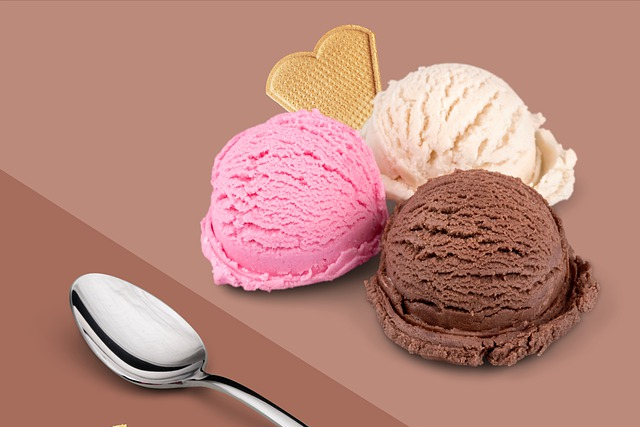
Philadelphia served as the capital of the young United States from 1790 to 1800, a time when it also represented the largest urban area of the new nation. Though the capital moved to Washington City in 1800, Philadelphia continued to thrive as a commercial and financial center. Small entrepreneurs who established businesses, tailors, dressmakers, bootmakers and cobblers, stationers, and of most importance for discussion here, confectioners, made Philadelphia a booming area of commerce in the early 19th century. One such entrepreneur was Augustus Jackson, who had once served, according to some sources, as a White House chef.
Sources describing Jackson and his contribution to ice cream in America are questionable at best. One source describing Jackson also claims George Washington brought ice cream pot freezers to Mount Vernon, “…souvenirs of a trip to France”. Unfortunately, Washington never visited France, though he did have a documented taste for ice cream. Augustus Jackson never applied for any patents involving the manufacture of ice cream, none of the many recipes attributed to him survive, and the locations of his ice cream manufactories are disputed. Nonetheless, he is credited by some with being the “Father of Ice Cream”.
Whether Jackson contributed significantly or he was an American myth, ice cream manufacturing and consumption grew rapidly in the antebellum era in Philadelphia. As America’s largest city it harbored a steadily growing confectioners’ industry. As a major port, its wharves and warehouses teemed with exotic flavors, as well as the produce of inland farms, and sugar from the Caribbean isles. Without refrigeration for long periods, ice cream was made to order and consumed in parlors, coffee shops, tearooms, and in private homes. By the 1840s it was shipped, packed in ice and sawdust, to cities and towns on inland waterways and the post roads.
8. The first American commercial ice cream factory opened in 1851
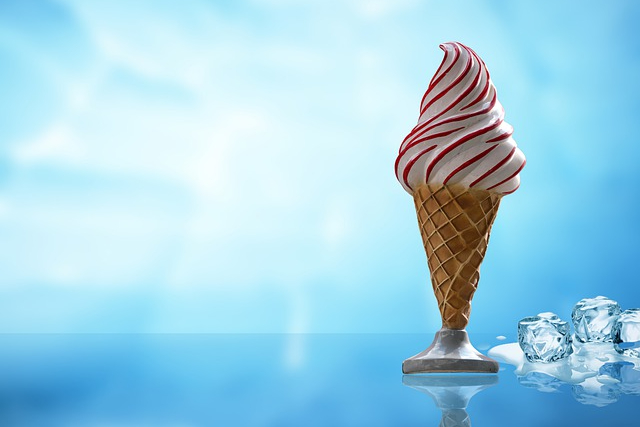
Commercial manufacture of ice cream, that is, not made to order by customers, began in 1851 when an enterprising Quaker milkman recognized an opportunity. In the tiny York County community of Seven Valleys, Pennsylvania, Jacob Fussell used excess milk and eggs to manufacture ice cream. That which he could not sell locally he shipped on the newly opened railroad to Baltimore. By 1854, demand in Baltimore was sufficient that Fussell shifted his manufacturing of ice cream to the city. Fussell’s 1854 ice cream factory in Baltimore is recognized as the birthplace of the commercial ice cream industry in the United States. Ice cream was no longer just a treat for the rich.
Fussell’s expanded his operation steadily over the ensuing decade, despite the Civil War and its disruptions of railroad traffic. By the mid-1870s he had ice cream manufacturing plants in operation in New York, Boston, and Washington City. His manufacturing in bulk allowed him to sell his products more cheaply than locally produced ice cream and growth was steady. Still, ice cream sales and shipping were hampered by the need for ice during the manufacturing, shipping, and storage phases. Ice cream continued to have a relatively short shelf life, especially in the warm months of the year.
Nonetheless, by the time of the nation’s centennial in 1876, ice cream was a food for the masses, rather than a specialty known only to the wealthy. Locally based dairies and confectioners merged to form regional ice cream manufacturing interests. Ice cream was sold in bakeries and shops, dairies, and drug stores, as well as in general stores and from specialty vendors in large cities and small towns. In the aftermath of the Civil War it surged in popularity, coupled with other mass-produced products designed for conspicuous consumption.
7. The ice cream soda was invented in 1874
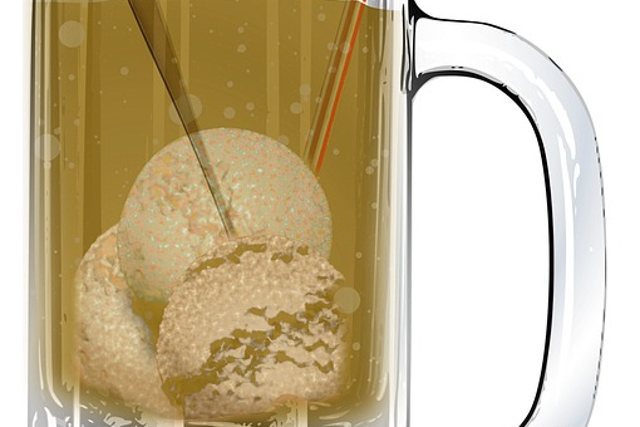
Following the American Civil War, pharmacists and chemists found a new demand for carbonated beverages. Marketed as tonics, to aid digestion, and to help alleviate “vapors” and other euphemisms for feminine complaints, they included such concoctions as Coca-Cola, root beers and ginger ales, and just plain carbonated water. Since pharmacies were also often the local source for ice cream it was inevitable that sodas and ice cream would somehow meet in a glass. And in a typically American manner, scores of stories emerged over the years, describing how the earth-shaking event transpired. All are exaggerations, though some may have a slight relationship with the truth.
Among the most popular tales of the birth of the ice cream soda is the fortuitous discovery of the beverage during the 1874 Franklin Institute Celebration in Philadelphia. In that version, Robert McKay Green, a vendor of carbonated beverages, supplemented his dwindling supply of ice to cool his drinks by substituting ice cream. Such events are part of American ice cream lore, a combination of Yankee ingenuity, divine inspiration, and stunning success. They are also mostly false; Green later admitted experimenting with various soda/ice cream combinations well in advance of the fair. Which explains why he had price lists and flavor combinations available as needed.
Many other tales describe the invention of the ice cream soda, and Green was conscious enough of the conflicting claims to insist that his gravestone include the inscription, “Originator of the Ice Cream Soda.” The beverage gave birth to two American icons, the soda fountain, which became a fixture in towns across America, and the soda jerk, a piece of Americana which lasted well into the 1950s.
6. Blue laws led to the name “Sundae” for ice cream with toppings
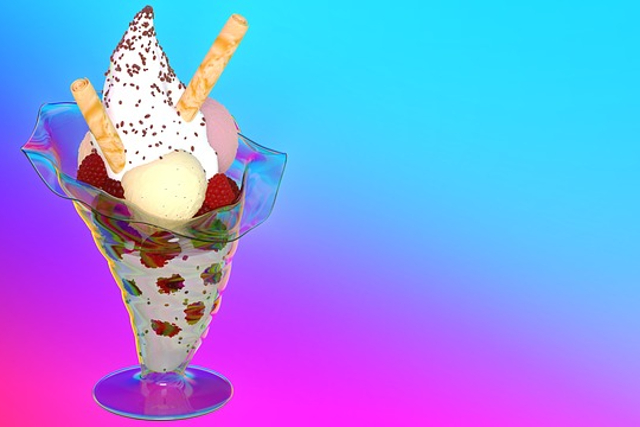
In the late 19th century several drives gained momentum across the United States, united only by their determination to ensure Americans weren’t having fun. Fundamentalists were aghast at the rampant sin flagrantly displayed everywhere, in nickelodeons and movie houses, on vaudeville stages, and, of course, in saloons and houses of ill repute. Patent medicines, available everywhere and cheaply, were often viewed as dangerous and sinful intoxicants. Among the latter were “medicinal” beverages sold as syrups blended in drug stores and soda fountains. Many, such as Coca Cola, 7-Up, Dr Pepper, and others, were marketed as digestive aids, stimulants, and “cures” for feminine disorders.
As such they qualified as intoxicants, at least to the intrepid guardians of public mores, who lobbied for their sales to be banned on Sundays. Included among these threats to American morality was simple carbonated water, when blended with various flavors or syrups into a beverage. In communities across the nation, the need to protect the Sabbath led to the banning of sodas on Sunday, which led to decreased sales of ice cream. To protect their profits, ice cream vendors offered a dish containing all ingredients of popular sodas – ice cream, a syrup topping, sprinkles, nuts, whipped cream, etc. – in short everything except the offending soda. They called their Sabbath Ice Cream Sundays, later evolved to Sundae. Or, at any rate, so the story goes.
Two Rivers, Wisconsin, has long claimed to have been the birth site of the ice cream sundae, a claim supported by none other than H. L. Mencken in the early 20th century. Mencken’s history as a hoaxer of renown has done little to dissuade Two Rivers’ claim over the years. Other towns, notably Ithaca, New York, dispute the Wisconsinites as mere poseurs. Evanston, Illinois, claims to have invented the name of the ice cream sundae (Garwood’s Drug Store), with the endorsement of the Evanston branch of the Women’s Christian Temperance Union. How they balanced the sundae against the sin of gluttony is unrecorded.
5. Milkshakes and malts evolved from the ice cream soda

The earliest known versions of the milkshake were simply milk floats, which featured ice cream floating in a glass of milk flavored with syrup. A malted milk was a separate beverage entirely, flavored milk fortified with malted milk powder, the latter believed to be a digestive aid (read laxative). In 1922 a soda jerk working for Chicago’s Walgreens Drug Store added ice cream to their malted milk beverage, blended the whole, and created the first malted milk shake. The combination proved so popular the term “Malt Shop” gradually supplanted “Ice Cream Parlor” as the destination of choice in pursuit of ice cream pleasure.
Milk/ice cream beverages sans malt became known under several names regionally, including frappes (New England), egg creams (the South), milk shakes or shakes (Midwest), and frosted, as well as other names, though nearly all were procured by visiting a malt shop. Special blenders rapidly evolved to prepare them in the presence of the customer.
Milk shakes and malts never endured the sniffing disdain once reserved for sodas, which is interesting because the original milkshake was a beverage which included whiskey, milk, and egg. In the 1960s the American fast food industry made “shakes” ubiquitous, and so they remain today, an altogether American innovation.
4. The banana split is claimed as an invention by at least two communities
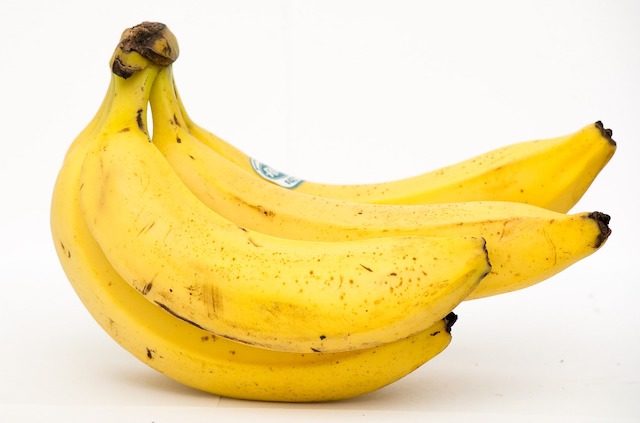
A dishful of conspicuous excess, the banana split is a sundae with at least one banana, multiple scoops of ice cream, several different toppings, whipped cream, additional toppings such as nuts, sprinkles, crumbled cookies, and of course, maraschino cherries. Such a gastronomic extravaganza, all nearly nutrition-free calories, could only be an American innovation. And such it is. Yet it should be no surprise that American communities dispute which should be acknowledged as the creator of the dish. Latrobe, Pennsylvania, home of Arnold Palmer, Rolling Rock Beer, and the saintly PBS television star Mr. Rogers, is one of them.
Latrobe claims a local pharmacy clerk by the name of “Doc” Strickler invented the banana split in 1904 while working at Tassell’s Pharmacy. Supporters of the claim cite ample “proof”, including the existence of receipts for dishes designed to accommodate the unusual dimensions of the sundae, though actual sightings of the receipts are unrecorded. Latrobe’s defense of its claims is chiefly aimed at Wilmington, Ohio, a small college town which claims to have been first to split the banana in 1907. Their version of the tale has local entrepreneur Ernest R. Hazard inventing the banana split, some say as part of a competition to attract more students from Wilmington College to enjoy his wares.
Both communities sponsor annual festivals dedicated to the banana split and to denigrating the claims of the usurper, whichever that may be. There are other pretenders to the throne as well. Chicago (Walgreens), Boston (Butler Department Store), Columbus, Ohio, Davenport, Iowa, and even New Orleans claim to be the birthplace of the banana split. But the main dispute seems to be between Latrobe and Wilmington. At least they agree that to be a banana split the fruit must be split lengthwise, with the scoops of ice cream nestled between the halves. If the banana is sliced crosswise the result is no banana split at all, but rather a mere banana royale.
3. The ice cream cone became popular in the early 20th century
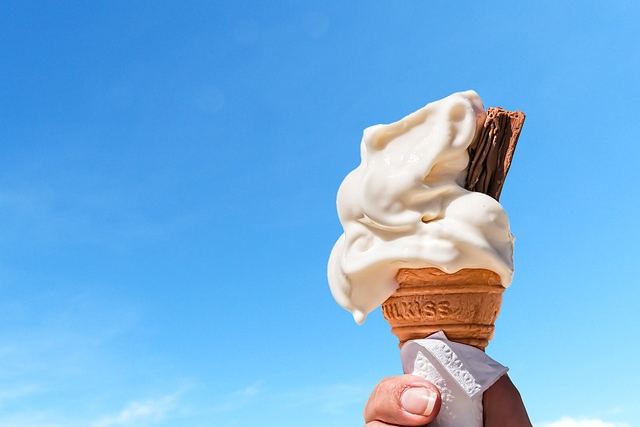
Probably the most famous of the legends surrounding the advent of the ice cream cone is that of the comestible being created during the St. Louis Exposition in 1904. Allegedly an ice cream vendor short of glassware gained the cooperation of a waffle vendor short of customers, and the ice cream cone was born, another example of Yankee ingenuity resolving a crisis to the benefit of all. A similar story exists regarding the creation of the hot dog bun. Both are untrue, but both seem to be too good in the retelling to let die.
In reality, edible containers for ice cream were on hand as planned at the St. Louis Exposition, and although not particularly well-known they were nothing new. Recipes for edible containers for ice cream existed in French cookbooks in the mid-19th century, where they were called cornets. Ice cream eaten on baked trays similar to cookies was known to Jefferson during his presidency. In fact, a patent for an ice cream cone was issued to one Italo Marchiony in 1903, in New York City. Another predecessor to the ice cream cone was the “hokey-pokey”, another Italian innovation in which corn starch and sugar were blended with water and frozen. The result was an edible dish perfect for the consumption of ice cream, which appeared in the mid-1880s.
So edible conveyances for ice cream were well-known prior to the St. Louis Exposition in 1904, and commonplace throughout. The Exposition, in addition to being a world’s fair, was a display of new industrial and commercial products, and the popularity of edible ice cream dishes – called generically “cornucopias” – was duly noted. The popularity of the ice cream cone skyrocketed following the fair, and ever since, but it was likely not an accidental invention born of necessity as legend attests.
2. Soft serve ice cream was invented in the United States
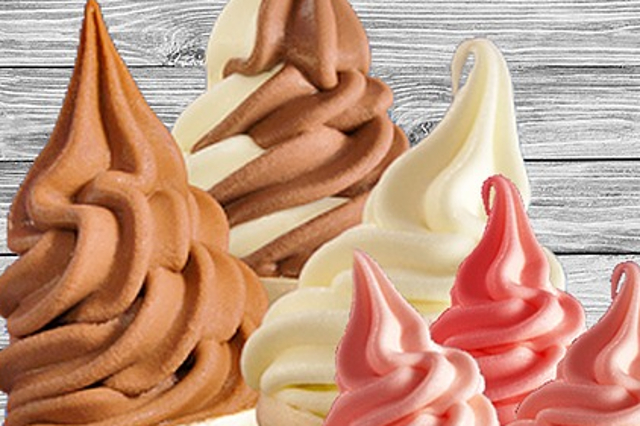
There are ice cream aficionados who look with disdain at soft serve ice cream. To the purists, which can be read the snobs, soft serve is little more than frozen yogurt, or ice milk, or some other lesser concoction unworthy of the name ice cream. Soft serve ice cream is a mix which contains less milk fat than its harder relative, and which attains its creamier consistency due to an injection of air during the freezing process. Since it is ice cream there should be no surprise that its invention is a point of dispute and contention. Both Carvel and the group which became Dairy Queen claim the credit, and there are others who contend for the title as well.
Tom Carvel claimed that a flat tire suffered during Memorial Day Weekend, 1934, forced him to sell his steadily melting ice cream from the back of his truck. He noticed throughout the weekend the crowds seemed to enjoy the softened ice cream, which inspired him to develop and market the product. The story remains Carvel’s official line, despite there having been no Memorial Day Weekend in 1934 (the holiday was on a Wednesday). In 1939 Carvel developed the first soft serve ice cream machine, according to their corporate history. Dairy Queen claimed their process first appeared in 1938, selling their soft serve mixture in Kankakee, Illinois.
Soft serve ice cream is another wholly American innovation, and is even referred to as American ice cream in some foreign lands. As with evidently all things involving ice cream it has its share of legends and myths, fans and detractors.
1. America is the second largest consumer of ice cream in the world (per capita)

America was once a land where ice cream was an extravagance enjoyed only by the wealthy. The huddled masses simply couldn’t afford it. Times changed. Today, Americans consume an average of 20 liters per person per year of ice cream, in all of its many forms. Yet even that rate of consumption is insufficient to rank Americans as the worldwide leader in ice cream eating. That distinction belongs to New Zealand, which consumes over 28 liters per person per annum. The most popular flavor is vanilla. Americans prefer chocolate. And according to the International Dairy Foods Association almost three quarters of Americans – 73% – consume ice cream at least once per week.
Even a person as farseeing as Thomas Jefferson could not possibly have predicted how ice cream evolved in the United States. Although he ate ice cream off of cookies, and enjoyed a dish similar to Baked Alaska, could he have predicted ice cream sandwiches? Prepackaged ice cream cones complete with chocolate swirls and nuts? Shops selling 31 flavors? Ice cream on a stick, as a layer of a cake, in a glass filled with root beer? One suspects not.
In a growingly health conscious America ice cream sales have dropped slightly over the past decades, though the sale of premium ice creams continues to grow. Perhaps the health conscious have heard of studies which show that consuming ice cream following a workout promotes muscle growth, if consumed within two hours of exercise. It also helps to impede breakdown of proteins. Chocolate milk has been accorded some of the same attributes, meaning the creation of a sports drink somewhat different from the norm could actually be good for health.